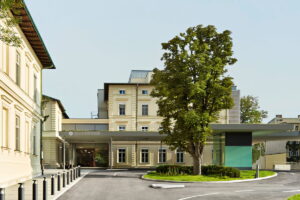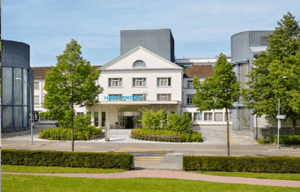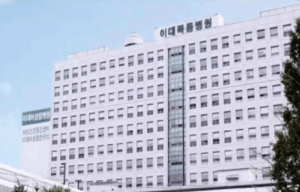Lyme disease
Disease description
Lyme disease, or borreliosis, is caused by the bacterium Borrelia burgdorferi, which is transmitted through the bites of infected ticks. In most cases, early diagnosis and antibiotic treatment lead to complete recovery. However, in some complex cases, Lyme disease may not respond to standard therapy and can cause serious complications, especially in the nervous system.
Neurological manifestations of Lyme disease
An advanced form of Lyme disease leads to neurological disorders — neuroborreliosis. This condition manifests as headaches, memory impairment, confusion, numbness of the limbs, impaired coordination, muscle weakness, and even paralysis. Patients may also complain of chronic fatigue and sleep disturbances.
The exact nature of complicated forms of Lyme disease remains controversial. Some experts believe that the infection continues to exist in the body in an inactive “dormant” form even after antibacterial therapy, causing periodic flare-ups. Others suggest that after the bacteria are eliminated, inflammatory or autoimmune processes continue, leading to a prolonged illness.
Diagnosis and treatment of complex forms of Lyme disease
Diagnosis is based on medical history of possible infection, stage of symptom development, MRI results, cerebrospinal fluid analysis, PCR diagnostics, and serological testing.
Leading clinics around the world, when faced with resistant forms of Lyme disease, use a comprehensive approach — the only treatment strategy possible given the controversial nature of the disease’s origin. In addition to standard antibacterial therapy, the following methods may be used:
- Immunomodulatory therapy: If autoimmune reactions are suspected, doctors may prescribe drugs that suppress immune system activity. This helps reduce inflammation and improve the patient’s condition.
- Plasmapheresis: This method allows the blood to be cleansed of antibodies and inflammatory components, which may be helpful in cases where an autoimmune nature of prolonged symptoms is assumed.
- Neurological rehabilitation: In cases of neurological disorders, restoring nervous system functions is important. Physical and cognitive therapy methods are used to help patients cope with coordination disorders, memory issues, and muscle weakness.
- Long-term antibiotic therapy: In some cases, longer courses of antibiotics are used, though this approach is debated among specialists. Some studies do not support the effectiveness of such treatment, but in certain cases, it proves to be beneficial.
- Symptomatic therapy: Doctors also prescribe medications to relieve symptoms such as painkillers, drugs to improve sleep, and reduce anxiety.
Innovations of global clinics
In-demand European clinics have developed diagnostic methods aimed at detecting persistent forms of the bacterium that may “hide” in the body’s tissues and not respond to standard antibacterial therapy. These tests allow more accurate diagnosis of chronic forms of the disease.
Top clinics
-
 Seoul, South Korea Asan Medical Center
Seoul, South Korea Asan Medical Center -
 Jerusalem, Israel Hadassah Medical Center
Jerusalem, Israel Hadassah Medical Center -
 Petah Tikva, Israel Medical Center “Rabin”
Petah Tikva, Israel Medical Center “Rabin” -
 Geneva, Switzerland Hirslanden Clinique La Colline
Geneva, Switzerland Hirslanden Clinique La Colline -
 Geneva, Switzerland Generale-Beaulieu
Geneva, Switzerland Generale-Beaulieu -
 Istanbul, Turkey Acibadem Altunizade
Istanbul, Turkey Acibadem Altunizade -
 Istanbul, Turkey Acıbadem Ataşehir Clinic
Istanbul, Turkey Acıbadem Ataşehir Clinic -
 Dubai, UAE NMC Healthcare
Dubai, UAE NMC Healthcare -
 Istanbul, Turkey Hospital “Memorial Şişli”
Istanbul, Turkey Hospital “Memorial Şişli” -
 Milan, Italy San Raffaele University Hospital
Milan, Italy San Raffaele University Hospital -
 Lassnitzhöhe, Austria Lassnitzhöhe Private Clinic
Lassnitzhöhe, Austria Lassnitzhöhe Private Clinic -
 Graz, Austria Leech Private Hospital
Graz, Austria Leech Private Hospital -
 Abu Dhabi, UAE Burjeel Hospital Abu Dhabi
Abu Dhabi, UAE Burjeel Hospital Abu Dhabi -
 Vienna, Austria Debling Private Clinic
Vienna, Austria Debling Private Clinic -
 Dubai, UAE Burjeel Hospital
Dubai, UAE Burjeel Hospital -
 Heidelberg, Germany Heidelberg University Hospital
Heidelberg, Germany Heidelberg University Hospital -
 Istanbul, Turkey “Memorial Bahçelievler” Clinic
Istanbul, Turkey “Memorial Bahçelievler” Clinic -
 Incheon, South Korea Gil Medical Center at Gachon University
Incheon, South Korea Gil Medical Center at Gachon University -
 Nyon, Switzerland Clinique Genolier
Nyon, Switzerland Clinique Genolier -
 Istanbul, Turkey “Memorial Ataşehir” Clinic
Istanbul, Turkey “Memorial Ataşehir” Clinic -
 Antalya, Turkey Memorial Antalya Hastanesi
Antalya, Turkey Memorial Antalya Hastanesi -
 Bodrum, Turkey Acibadem Bodrum Hospital
Bodrum, Turkey Acibadem Bodrum Hospital -
 Barcelona, Spain QuironSalud Barcelona Hospital
Barcelona, Spain QuironSalud Barcelona Hospital -
 Barcelona, Spain Medical Center "Teknon"
Barcelona, Spain Medical Center "Teknon" -
 Barcelona, Spain University Hospital Barnaclinic+
Barcelona, Spain University Hospital Barnaclinic+ -
 Madrid, Spain University Clinic HM Madrid
Madrid, Spain University Clinic HM Madrid -
 Gebze, Turkey Anadolu Clinic
Gebze, Turkey Anadolu Clinic -
 Zurich, Switzerland Hirslanden Clinic
Zurich, Switzerland Hirslanden Clinic -
 Seoul, South Korea Samsung Medical Center
Seoul, South Korea Samsung Medical Center -
 Seoul, South Korea Medical Center at Ewha Womans University
Seoul, South Korea Medical Center at Ewha Womans University -
 Seoul, South Korea SNUH
Seoul, South Korea SNUH































